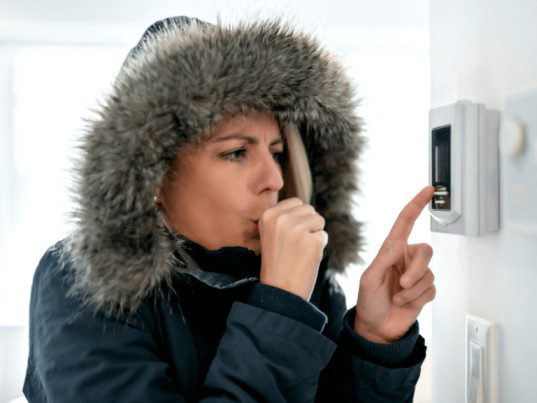
A broken heating system can really disrupt your life, more so when it’s cold outside. In the U.S., many homes face heating failures each year. This leads to expensive fixes and sometimes, the need for a new system.
When your heat isn’t working, finding out why is key. Knowing the main reasons for heating failures helps homeowners fix the problem fast. This way, they can get their homes warm again.
Key Takeaways
- Heating system failures can be caused by a variety of factors, including faulty thermostats and clogged air filters.
- Regular maintenance is key to avoid heating system failures.
- Homeowners should check their heating systems often to spot any issues.
- Ignoring small problems can cause bigger issues and cost a lot to fix.
- Knowing why your heat isn’t working helps you act quickly to fix or replace it.
What is the most common cause of heat not working?
When the heat doesn’t work, it’s important to figure out why. Many things can go wrong, like problems with the thermostat, furnace, or how the heat spreads around.
Common signs of heating system malfunction
Knowing the signs of a heating problem can help you fix it fast. Look out for:
- Insufficient warmth or uneven heating
- Unusual noises or vibrations from the heating system
- Increased energy bills without a corresponding increase in usage
Thermostat issues are a big reason for heating problems. To fix it, check if the thermostat is set right and working well.
Some common thermostat problems are:
- Incorrect temperature settings
- Battery drain or power issues
- Calibration problems or faulty sensors
By knowing what causes heating problems and troubleshooting early, you can keep your heating system running smoothly.
Furnace and heating system failures
Furnace problems are a top reason for heating system failures. This leaves homes cold and uncomfortable. Issues like faulty ignitions, clogged filters, and malfunctioning burners can cause these problems.
Faulty ignitions are a common issue. The furnace might not light or stay lit because of a bad ignition system. Cleaning or replacing these parts regularly can solve this problem.
Common Furnace Problems
Clogged filters are another big problem. When filters get full of dust and debris, they block airflow. This makes the furnace work too hard and might cause it to overheat or shut down. Regularly checking and replacing filters helps keep airflow right and stops furnace strain.
- Dirty or clogged filters
- Faulty ignition systems
- Malfunctioning burners
- Thermostat issues
Malfunctioning burners can also cause heating system failures. Dirty or damaged burners can lead to uneven heating, less efficiency, or the furnace shutting down. Keeping burners clean and working right is key for a reliable heating system.
Maintaining Your Furnace
To avoid furnace failures, regular maintenance is essential. This means getting annual inspections from a skilled HVAC technician, cleaning or replacing filters when needed, and making sure all parts are working well.
- Schedule annual furnace inspections
- Clean or replace filters regularly
- Check and maintain ignition and burner components
Knowing about common furnace problems and taking steps to keep the heating system in good shape helps. Homeowners can make sure their furnace works well and keeps them warm during the cold winter months.
Distribution and airflow problems
One main reason a heating system might not work right is airflow and heat distribution issues. If a central heating system doesn’t heat as it should, the problem often lies in these areas.
Problems with distribution and airflow can show up in different ways. You might notice cold spots in your home, see your energy bills go up, or find your system not working as well as it should. It’s important to understand what causes these issues to fix them effectively.
Troubleshooting Airflow Problems
To find and fix airflow problems, start by checking the ductwork and vents. Look for any blockages or damage. Leaks or obstructions can cut down airflow, making heating less effective.
- Check for blockages in vents and registers.
- Inspect ductwork for leaks or damage.
- Ensure that all vents are open and not obstructed by furniture or other objects.
- Consider having a professional inspect and clean the ductwork as part of regular HVAC maintenance.
Regular HVAC maintenance is key to avoiding airflow problems. This means getting annual checks from a skilled technician, changing filters often, and making sure your heating system fits your home’s size.
By tackling distribution and airflow issues, you can make your heating system work better. This will help keep your home warmer and more comfortable.
Conclusion
Knowing why your heat doesn’t work is key for homeowners. It helps them fix the problem fast. By checking the heating system, finding the cause, and fixing it, you can warm up your home again.
Checking the furnace, how heat spreads, and airflow is important. Homeowners can find and maybe fix problems. This makes sure your heating works well.
Following the tips from earlier helps keep your home cozy. Regular checks and quick fixes stop heating problems. This keeps your home warm and comfy.